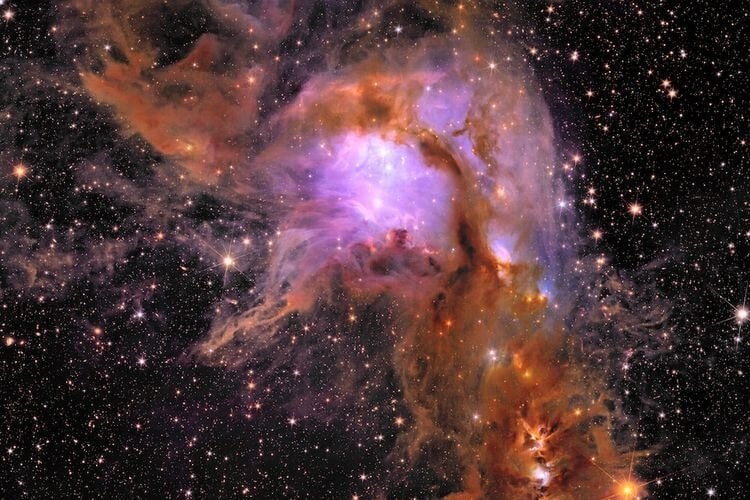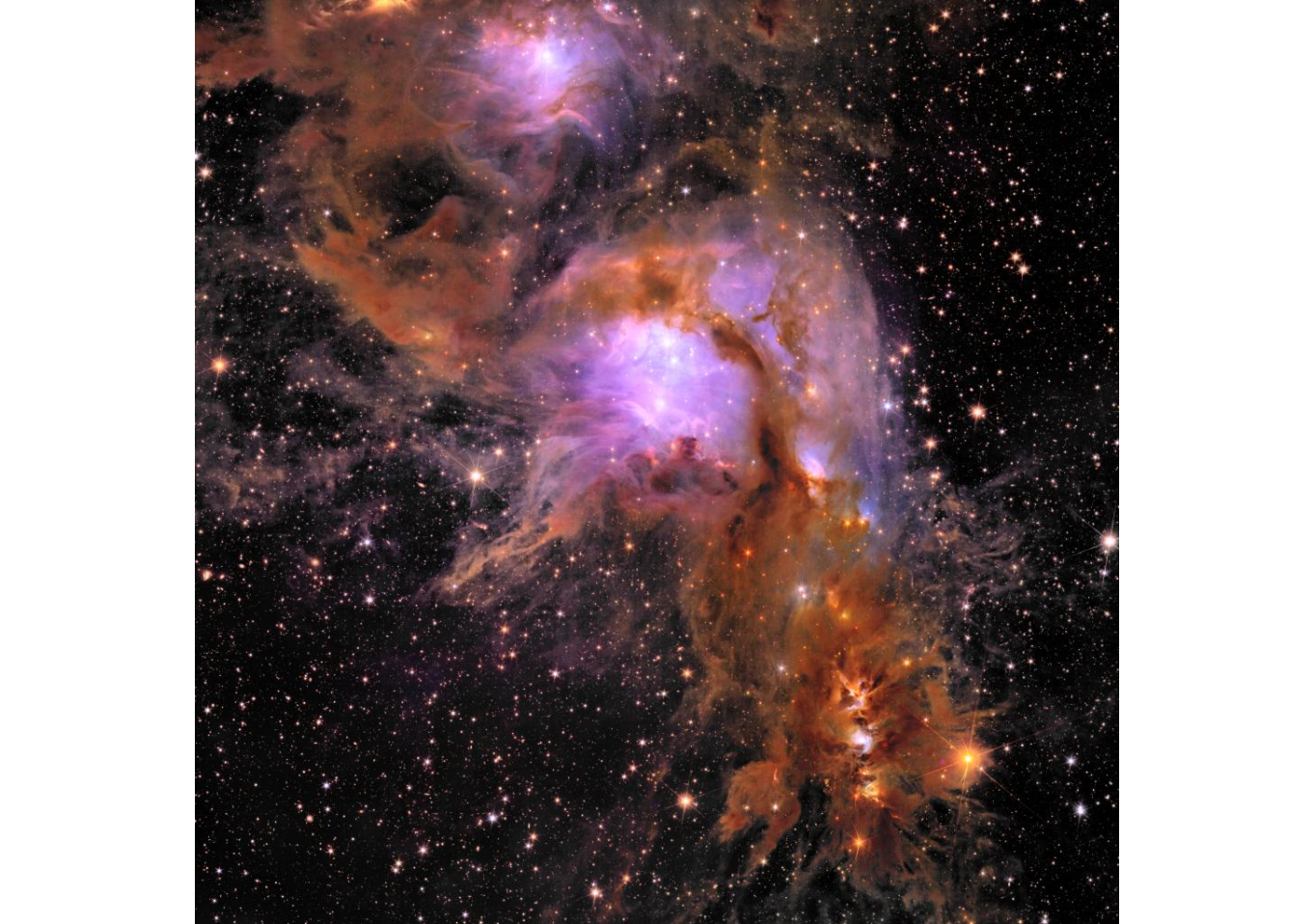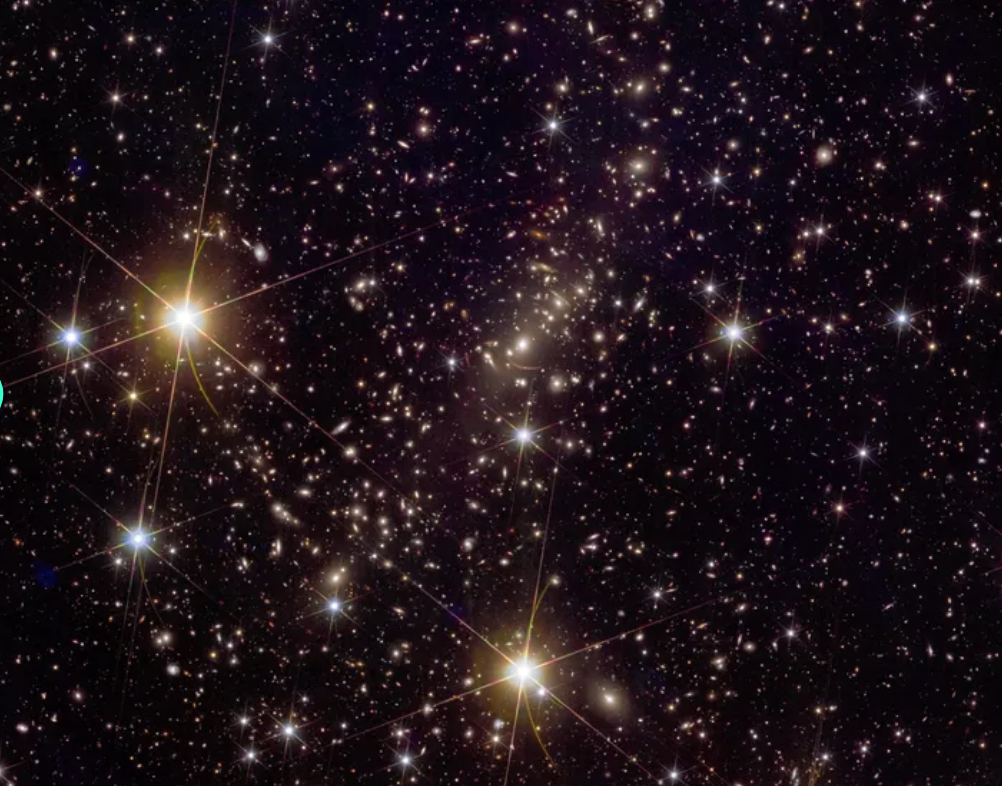
Stunning new images have been released from the Euclid Space Telescope On the occasion of the announcement of the first scientific results from telescope observations.
The European Space Agency (ESA) mission, which left Earth last year, aims to explore the mysteries of dark matter and dark energy, forces that make up most of the known universe but remain largely unknown and whose observation has proven particularly complex. Scientists know that dark matter exists because they are able to observe the effect of its gravity, for example, but they cannot observe it directly because it does not interact with light.
The solution is a highly sensitive instrument like Euclid, capable of observing distant galaxies and discerning the influence of dark matter on them. The goal is to precisely measure the shapes of more than 1.5 billion distant galaxies. However, these galaxies appear faint and small when viewed from Earth, as our planet’s atmosphere distorts their image. As Euclid hovers above the atmosphere, in space, it is able to observe these galaxies with less distortion to deal with.
The result is images four times higher resolution than those taken by ground-based telescopes. Using data from just 24 hours of observations, objects such as galaxy clusters, new star birth regions and a large nearby spiral galaxy called NGC 6744 have been detected.

Messier 78 belt, where the birth of new stars is recorded (Euclid/ESA)
In addition to measuring galaxies for the purpose of monitoring dark matter, the telescope will also provide data on other astronomical objects. Belts like Messier 78 will be examined for objects such as so-called “unbound” planets, which do not orbit a particular star but move freely in the universe. Scientists estimate that there are trillions of such planets in our galaxy, but monitoring them is difficult, as there are often no other nearby stellar bodies to interact with, which allows them to be monitored indirectly. Thanks to Euclid, it is now possible to observe planets four times the size of Jupiter: apparently, these are very large objects compared to the planets in our system, but very small compared to the size of stars.

At the other end of the mass scale, Euclid is able to observe entire galaxy clusters, such as Abell 2390, which includes more than 50,000 galaxies. These clusters are so massive that they bend spacetime, creating a phenomenon called gravitational focusing, in which light from distant galaxies is bent and refracted into a distorted shape, like a disk or arc. This allows researchers to study the amount of dark matter present in the cluster, as the greater the amount, the greater its mass, and thus the intensity of the phenomenon.
The first images from Euclid have exceeded all expectations, according to the scientific team coordinating the mission, as the results of just one day of observations have already captured millions of different objects, giving scientists a lot of material. Over the next six years, Euclid is expected to detect more elements of the universe as it observes a third of the entire universe.
-
8

“Avid problem solver. Extreme social media junkie. Beer buff. Coffee guru. Internet geek. Travel ninja.”






More Stories
In Greece Porsche 911 50th Anniversary – How much does it cost?
PS Plus: With a free Harry Potter game, the new season begins on the service
Sony set to unveil PS5 Pro before holiday season – Playstation